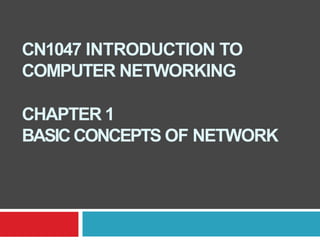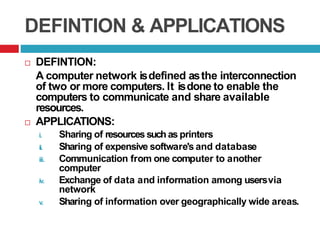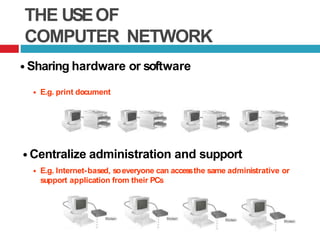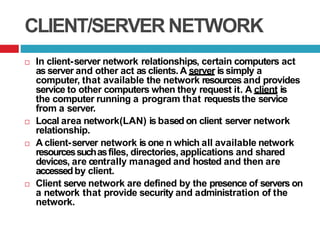The document provides an overview of computer networking concepts, defining a computer network as the interconnection of two or more computers for communication and resource sharing. It outlines the types of networks including LAN, WAN, PAN, CAN, and MAN, as well as their characteristics, advantages, and disadvantages. Additionally, it explains network topologies, client-server and peer-to-peer models, and transmission media used in networking.



































